#south east asian folklore
Text
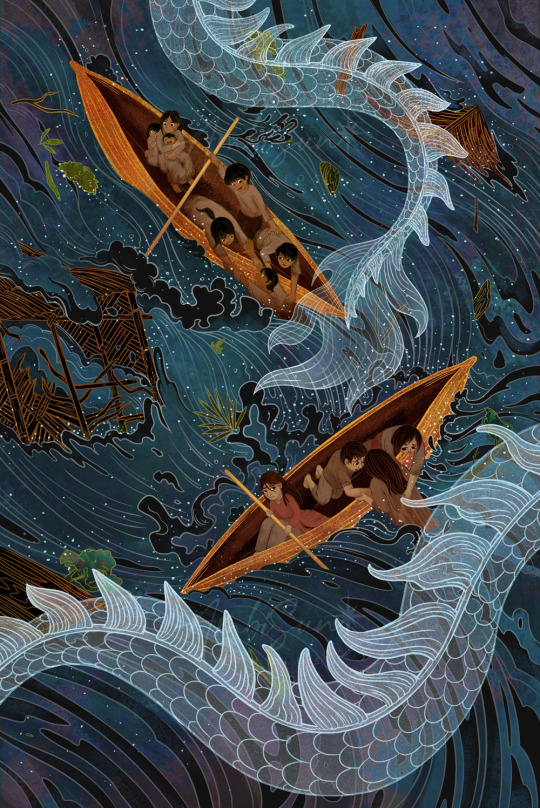
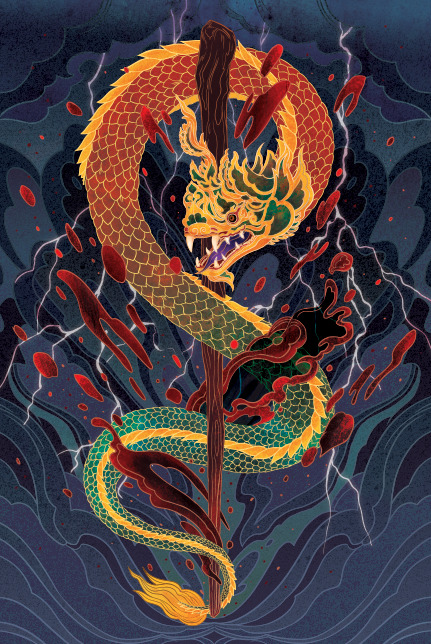
South East Asia and our Dragons that solves their problems by flooding villages when they’re disrespected.
#naga#dragon#south east asia#folklore#tales and oracle of eleven#mythology#south east asian folklore
274 notes
·
View notes
Text

Bat Week 2020: A Celebration of Bats in Asia-Pacific Cultures
Art by Reimena Yee.
(Bigger image from here for more readable text. The background colouring is a little too bright though)
Text on the map under the cut.
You may have heard the soft flutter of bat wings at dusk, noticed them flitting around at night, or even seen them sleeping under roof eaves, in trees and caves during the day. But apart from these brief encounters, have you ever wondered how bats may have traditionally held deeper symbolic meaning in various cultures?
This visual map guide celebrates the many positive bat symbols and folklore found across the Asia-Pacific region. Our ancestors recognised the importance and wonder of bats!
Look out for our full write-up and get updates by following rimba.ngo!
Project Pteropus, a project under RIMBA.
India
In India, Hindu devotees of the goddess Kali worship and protect flying foxes which roost in sacred groves. Bats also feature as symbols of love in Tamil Sangam poetry, dating back more than 2000 years!
China / Taiwan / Chinese culture
A tale from ancient China: The gods took pity on Zhong Kui when he committed suicide. They named him King of Ghosts and tasked him to discipline demons, with bats acting as his helpers who scout out demons for him to vanquish.
In Chinese opera, the Zhong Kui character wears a bat motif on his mask.
The Five Blessings (五福 wŭfú) in Chinese culture are health, wealth, longevity, love of virtue and peaceful death. They are represented symbolically by five bats (五蝠 wŭfú).
In traditional Chinese culture, bats are lucky symbols because the word for bat (蝠 fú) sounds like the word for blessing (福 fú).
Lucky bat motifs can be found on traditional ceramics, jewellery and textiles in Chinese, Peranakan and other Chinese-influenced communities across East and Southeast Asia.
Vietnam
Locals believe that flying foxes roosting in the Wat Mahatup temple grounds in Vietnam are calling forth blessings from Buddha when they circle the temple during their fly-out every evening.
Malaysia / Indonesia
The indigenous Mah Meri in Peninsular Malaysia perform a traditional dance called 'kuang kuwait', mimicking the graceful movements of flying foxes.
The 'siku keluang' a choreography step in the traditional Malay Zapin dance represents humility and restraint - inspired by the flying fox wrapping up its mighty wings' strength when not in flight.
The 'siku keluang', meaning flying fox elbow in the Malay language, is a zigzag, chevron or herringbone motif used in Malay and Javanese traditional textiles and pottery.
According to a traditional Iban belief from Sarawak, Malaysian Borneo, bats act as shamanic messengers to the upper-world during the Gawai harvest festival.
The indigenous Iban in Sarawak traditionally featured the flying fox, locally known as 'semawa', as a tattoo motif.
Papua New Guinea / Western New Guinea
In Bowi folklore of Papua New Guinea, Kinjinmbunduo was a mythical giant flying fox female spirit who left thunderstorms and strong winds in her wake, striking terror and awe but also replenishing the river basin with fruit trees by dispersing seeds during her nocturnal visits.
In New Guinea and Papua New Guinea, the indigenous Asmat and Trobriand carved out flying fox motifs on their war shields to represent triumphant head-hunters.
Samoa
Flying foxes are perceived as protectors and saviours in Samoan folklore. According to legend, Samoan Princess Leutogi befriended and warned flying foxes about the king's hunting plans. In return, the bats rescued her from being burned alive and also brought her food when she was stranded on an inhospitable island. She later bestowed the name "Tonumaipe'a" on her son, meaning "rescued by flying foxes".
For Samoan men, the pe'a—the local name for flying fox is a coming-of-age tattoo that extends From the waist to the knee, symbolising protection over a warrior.
The Samoan war god Sepo took the form of a flying fox to guide his people in battle. If they saw a flying fox ahead, it meant victory would be theirs; if it flew back towards them it was a warning to retreat.
Australia
Flying foxes were important animals to the Aboriginal people of Cape York, Australia, and a common feature in their prehistoric rock art.
Folklore of the Aboriginal Wik in Australia tells of two brothers who broke taboo by spearing and cooking flying foxes. The bats escaped and carried the boys up into the sky as punishment, leaving them there to serve as a grim reminder now immortalised in the Gemini constellation!
Link to open access article of the research:
#bat#bats#asia pacific#south east asia#asia#folklore#culture#cultures of the world#asian culture#chinese culture#tradition#indigenous#indigenous culture#bat week#chiroptera#mammal#animal#bats of asia#india#china#taiwan#vietnam#malaysia#indonesia#papua new guinea#new guinea#samoa#australia#partially described#bat info
2 notes
·
View notes
Text

Oracle deck based on South East Asia mythology coming up on Kickstarter!!
#tarot#divination#oracle deck#south east asia#folklore#mythology#south east asian mythology#witchcraft#witchblr#tarot deck#oracle cards#cartomancy#kickstarter#asian mythology#asian folklore
0 notes
Text
Magical girls inspired by the folklore of Indigenous, African, South/South East Asian, Mexican, Brazilian and Aborigine cultures.
33 notes
·
View notes
Text

Another shared myth across many cultures you might not know about? The swan maiden.
Shows up in Irish folklore, in Wales, Germany, Romania, Russia, Swede, Finish, through other parts of Asia, the middle east, and one of the oldest south Asian tales there is - so old that- people believe the theme might have come to that story from an earlier proto Indo-European tale.
What does the swan maiden represent? Well, it changes, but it's often thought to be: divinity, a representation of both the sky and water, a bridge between them, and celestial presence - entities. Luck. Prosperity.
#The swan maiden#folklore#wales#germany#romania#russia#sweden#ireland#asia#Swan Maiden#swan queen#middle east#folktales#myths#legends#lore#ancient history#ancient mythology#mythology#storytelling#storyteller#writers and writing#writing#writers on tumblr#writeblr#writers and poets#writerscommunity#creative writing#indie writer#writers
18 notes
·
View notes
Text
Big Mama's Chinese Roots and a Connection to Tang Shen?
First off, to preface... this whole thing started because @caro-rolo figured out that the Mystic Portal Key doohickeys in Rise are actually just some kind of fancy compasses that have North, South, East, and West written in Chinese characters.


Now, the first thought I had to learning this was "Tang Shen" because in the TMNT universe where Japanese influence is pretty heavy, she is notable for having a Chinese name.
She is also the love interest of Hamato Yoshi in many different variations. Though in Rise, that role belongs most notably to Big Mama, with Tang Shen being a blink and you miss it easter-egg credit on the cover of Jistu for Justice:
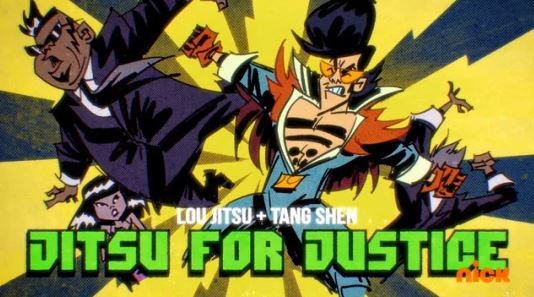
Mama is also most likely the source of where Splinter got his mystic portal key, and she even has one of her own in her office.
Judging by how much control she has over the Hidden City, from the Battle Nexus, to demolition derbies, to train stations, to crime rings, she seems to have a large control over just who all is in her city, and these keys could very well be something she controls directly.

Now, Big Mama has all the set ups for having typical TMNT Japanese roots. Even her home estate seen in "Hidden City Job" has a very Asian look to it inside and out:


Plus, the whole "her being a yokai", makes it easy to assume she is based on some kind of Japanese spider demon like Jorōgumo, Yatsukahagi/Tsuchigumo, or Ōgumo, etc.
But "Yokai" can also be used to describe the Chinese term "yaoguai" which is basically the same definition.
So if Mama were a Chinese spider demon instead, the first one who comes up on a quick Google search is "zhī zhū jīng" or "spider woman".
These are 7 spider demon sisters who fight Sun Wukong in Monkey King: Journey to the West.

Here, the spiders changed into seven beautiful young ladies who wanted to eat the flesh of Sun Wukong's master, Tang Seng, which is said to make the consumer immortal and forever young.
"Tang Seng"... "Tang Shen"... sounds pretty similar.
And aren't there also some animation ties from ROTTMNT to Lego Monkey King? Tangent side note, but there's a spider demon queen in that universe too and guess what? SHE'S PURPLE!
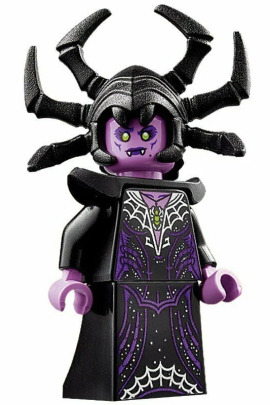


And where did Mama and Lou Jistsu first meet?
On set of one of his movies "Crouching Shrimp Hidden Tiger Prawn" in 1984. A movie where an actress like Tang Shen could very well have ties to? (We'll come back to this at the end.)

Another chip in the Chinese vs Japanese bucket is Big Mama's Security Team:

At first, I thought their distinct faces represented Blue Japanese Hannya/ Oni masks, but what if they're supposed to be Chinese Nuo masks instead? Not unlike Zuko's Blue Spirit mask in ATLA.


You could also argue these guys are wielding a sort of Qinglong Ji or Fangtian Ji, which are Chinese spear or polearm weapons.
(But if anyone knows what those spear thingies are really called, please let me know, it's driving me nuts!)
...
In conclusion, I got sent on a massive rabbit hole because of a fictional compass and regret nothing! 🧭
Now what is Big Mama's connection to Tang Shen?
Are they related? (The actress does look a bit purple.) They could be sisters like the 7 sisters of the Monkey King lore.
Did Mama seek to get rid of Tang Shen so she could get closer to Lou Jitsu herself?
Are they the same person?
Is Big Mama based on Japanese or Chinese folklore?
Did any of this make any sense at all?
Let me know what you think, and thanks for joining me for another deep dive into another one of my random ROTTMNT theories!
EDIT: (PS- Sorry, if the "read more" messes the order of these up, but the scroll was annoying me in my own tags.) 😅
#rottmnt#rottmnt theory#rottmnt big mama#rottmnt tang shen#lego monkey king and monkey king journey to the west mentions#the friggin compass threw me for a loop man#long post#roninreverie#roninrambles
105 notes
·
View notes
Text

Hello everyone! A new month is approaching so I'm back with another list. This time, it's a collection of fairytale retellings! Hope you like it :)
As always, please remember to vote using the link at the end of the post. And now, onto the books...
Bryony and Roses, by T. Kingfisher
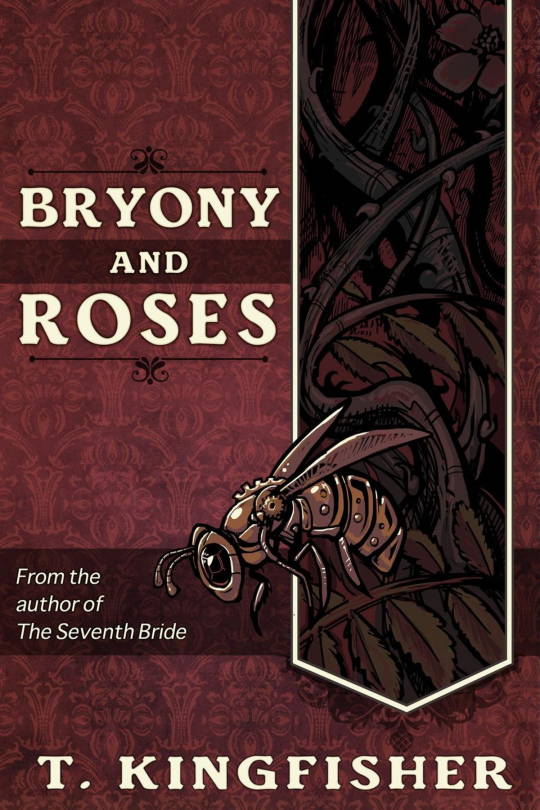
Bryony and her sisters have come down in the world. Their merchant father died trying to reclaim his fortune and left them to eke out a living in a village far from their home in the city.
But when Bryony is caught in a snowstorm and takes refuge in an abandoned manor, she stumbles into a house full of dark enchantments. Is the Beast that lives there her captor, or a fellow prisoner? Is the house her enemy or her ally? And why are roses blooming out of season in the courtyard?
Armed only with gardening shears and her wits, Bryony must untangle the secrets of the house before she—or the Beast—are swallowed by them.
Deerskin, by Robin McKinley

As Princess Lissla Lissar reaches womanhood, it is clear to all the kingdom that in her beauty she is the image of her dead mother, the queen. But this likeness forces her to flee from her father's lust and madness; and in the pain and horror of that flight she forgets who she is and what it is she flees from: forgets almost everything but the love and loyalty of her dog, Ash, who accompanies her. But a chance encounter on the road leads to a job in another king's kennels, where the prince finds himself falling in love with the new kennel maid . . . and one day he tells her of a princess named Lissla Lissar, who had a dog named Ash.
A Thousand Beginnings and Endings, Edited by Ellen Oh and Elsie Chapman
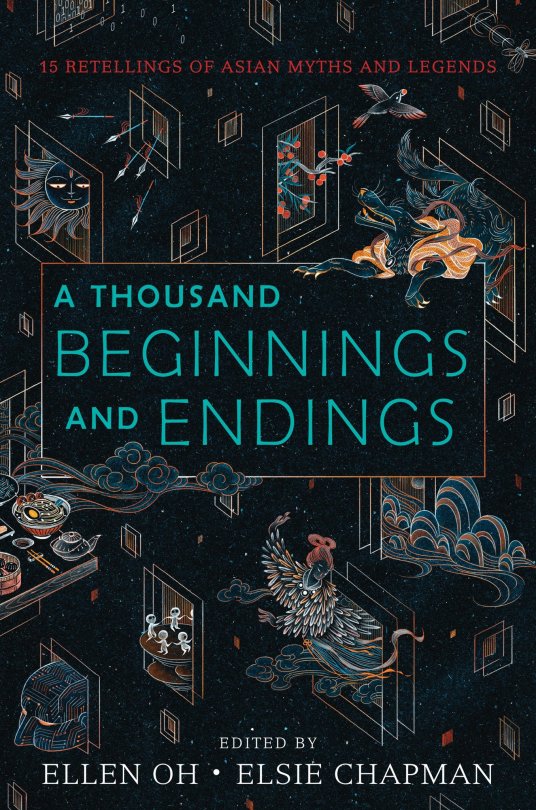
Sixteen extraordinary authors—including New York Times bestsellers Melissa de la Cruz, Renée Ahdieh, and Julie Kagawa—reimagine the folklore and mythology of East and South Asia in short stories that are by turns enchanting, heartbreaking, romantic, and passionate. This exquisite paperback anthology includes an original bonus story from Ellen Oh. In a starred review, Publishers Weekly called A Thousand Beginnings and Endings a “must-read.”
A mountain loses her heart. Two sisters transform into birds to escape captivity. A young man learns the true meaning of sacrifice. A young woman takes up her mother’s mantle and leads the dead to their final resting place.
Bestselling and award-winning authors explore the timeless themes of East and South Asian lore in sixteen original stories that will appeal to every reader. From fantasy to science fiction to contemporary, from romance to tales of revenge, these stories will beguile readers from start to finish.
All the Ever Afters: The Untold Story of Cinderella's Stepmother, by Danielle Teller
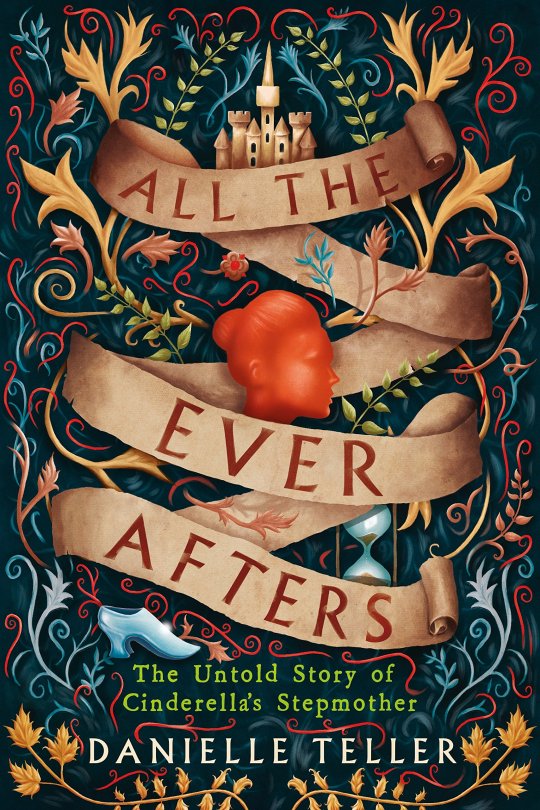
We all know the story of Cinderella. Or do we?
As rumors about the cruel upbringing of beautiful newlywed Princess Cinderella roil the kingdom, her stepmother, Agnes, a woman who knows all too well about hardship, privately records the true story. But what unfolds is not the princess's history. The tale Agnes recounts is her own.
A peasant born into serfdom, Agnes is separated from her family and forced into servitude as a laundress’s apprentice at Aviceford Manor when she is just ten years old. Alone, friendless, and burdened with a grueling workload, Agnes carves a place for herself in this cold place that is home to Sir Emont Vis-de-Loup, a melancholic and capricious drunkard.
Using her wits and ingenuity, Agnes eventually escapes and makes her way toward a hopeful future, serving as a housemaid for the powerful Abbess Elfilda. But life once again holds unexpected, sometimes heartbreaking twists that lead Agnes back to Aviceford Manor, where she becomes nursemaid to Ella, Emont's sensitive, otherworldly daughter. Though she cares for Ella, Agnes struggles to love this child, who in time becomes her stepdaughter and, ultimately, the celebrated princess who embodies all our unattainable fantasies.
Bitter Greens, by Kate Forsyth
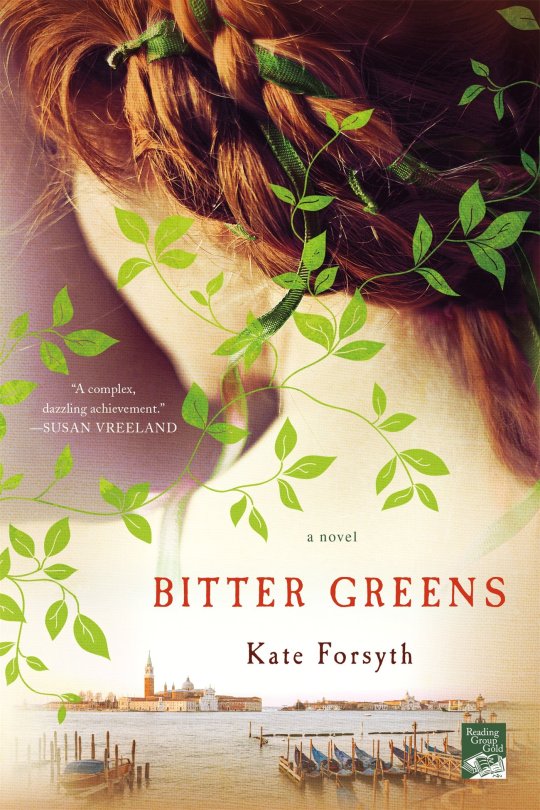
The amazing power and truth of the Rapunzel fairy tale comes alive for the first time in this breathtaking tale of desire, black magic and the redemptive power of love
French novelist Charlotte-Rose de la Force has been banished from the court of Versailles by the Sun King, Louis XIV, after a series of scandalous love affairs. At the convent, she is comforted by an old nun, Sœur Seraphina, who tells her the tale of a young girl who, a hundred years earlier, is sold by her parents for a handful of bitter greens...
After Margherita's father steals parsley from the walled garden of the courtesan Selena Leonelli, he is threatened with having both hands cut off, unless he and his wife relinquish their precious little girl. Selena is the famous red-haired muse of the artist Tiziano, first painted by him in 1512 and still inspiring him at the time of his death. She is at the center of Renaissance life in Venice, a world of beauty and danger, seduction and betrayal, love and superstition.
Locked away in a tower, Margherita sings in the hope that someone will hear her. One day, a young man does.
Vote for our next book here.
32 notes
·
View notes
Note
I came across your anti-Grishaverse posts and I like to add some of own analyses about the worldbuilding (if you're willing to go through the series again after 2021, ofc). My knowledge on Russian history and folklore is very surface level but even then I still was absolutely baffled at how bad the worldbuilding is. Especially with "Grisha" which is literally Russian for Greg???? Lol, let's just call in the Pasha Army too because why not. I've already relentlessly made fun of the name "Grishaverse" being a multiverse of Gregs so here are my favorites: Gregor-Man: Into the Greg-verse. Gregory-thing Gregory-where All At Greg, Doctor Greg and the Multiverse of Greg-ness. And it's even worse with the show when they clumsily tried to explore racism with a more diverse cast of people of Asian descent which would've been an incredible story considering Russia's rich history with the Mongols and the Turks but then they had to add in the term "rice-eater". When like, Russian cuisine includes rice. Like salmon coulibiac. So it just makes no sense at all, it's kinda the equivalent of calling an American "burger-eater". And the absence of patronymic names just because the author thought it sounded better without them (Alina Starkov is grammatically incorrect and it drove me insane, it literally takes 5 minutes to look up how to do it). I think it's great how the author wanted to do a fantasy story with some vaguely Slavic traditions but the result reminds me of Raya and the Last Dragon from Disney which, as a South East Asian person, I really dislike because it literally does the same thing of cherry picking stuff from SEAsian countries and using words from real languages that don't make sense at all, even if it's a fantasy story (I really hate the "dep la" line from the movie). It's like the author doesn't really care about the nuances of Russian society or Slavic societies in general and really only cared about the aesthetics of it (which the show didn't even do right, what the fuck are those costumes, I hate fantasy costumes that look like they were on a haute couture fashion line). Which could lead into some really awful pitfalls bordering on stereotyping and exoticization. I think it's great how she wanted to do a fantasy story with some vaguely Slavic traditions since they're pretty underappreciated but the result reminds me of Raya and the Last Dragon from Disney which, as a South East Asian person, I really dislike because it literally does the same thing of cherry picking stuff from SEAsian countries and using words from real languages that don't make sense at all (I really hate the "dep la" line from the movie). I'm just tired of authors cherry picking stuff from other cultures for the aesthetics and don't bother to really delve into said cultures and build an interesting story inspired by their folklore or history. Not to mention, it feels like the lack of research shows a reluctance to genuinely learn and fall in love with Slavic cultures, like Westerners still think they're backwards and barbaric. I certainly felt the same way with Raya.
So, I'll start with the disclaimer that I haven't seen Raya as of now so I can't really speak for it, BUT I think the one nuance I would bring to this is that I do think it's fine to use artistic licence when you're taking inspiration for a certain culture, WITH THE VERY IMPORTANT CAVEAT that you need to understand what you're taking inspiration from in the first place.
Take me, for instance. My original fiction takes inspiration (among other things) of Breton tales and mythology, since it's the region where it's believed Nimue trapped Merlin, and there is a personnifcation of Death figure that is a bit of a nod to the Ankou (who in Breton mythology is considered to be Death's henchman), a plot point that will be a callback to the Midnight Washerwomen, and so on and so forth, but none of these are a 1:1 comparison with the Ankou and the Midnight Washerwomen, simply because... well, I felt like doing something different. But you know, I acknowledge it's a nod, I'm not going to say "Lord Death in my story is like the Ankou", because that simply wouldn't be true nor accurate.
All that to say, "inspiration" doesn't save you from having to do research, and learning "why" certain things tick a certain way. Orthodoxy tends to be very oriented towards mysticism and spirituality, and we kind of get that with the cult of the Saints in the Grishaverse, but if you stop and think about religion for more than 5 minutes in that setting, it falls apart. You could get away with saying naming conventions are different in your story compared to Russian conventions (if only for the sake of being gender-neutral and more inclusive), but it becomes a problem when there are several other mistakes that native speakers can easily point out.
And then, of course, you have to take into account that LB's forte is not writing fantasy that involves politics, sociology, wars, and so on. If we're talking about something that's more "in isolation" like the SoC duology, you can get away with that. Seriously, 19th Russia was a mess - it produced absolutely amazing art that endures to this day and still inspires a lot of people (not that we see any hint of that lmao), but it was also a pretty shitty place to live if you were a peasant or a serf. The problem is, the PoV characters we have for both the Grisha trilogy and the KoS duology are essentially 21st century characters, who apply 21st century logic and solutions to a 19th century setting, and instead of that causing a certain set of consequences, it works out for them when it really shouldn't, all the while they're ignoring HUGE PROBLEMS that are right there.
If you're going to write high fantasy with big stakes, I cannot recommend enough reading and learning about history. You're writing about a female freedom fighter in an oppressive regime? Read about real life folk heroines - Boudica, the Trung sisters, Joan of Arc, Emilia Plater, Rani Lakshmibai. You're writing about a rags (or close enough) to ruler protagonist? Read about Catherine I of Russia, Wei Zifu, Basil I, Fredegund, Theodora, Honwu Emperor. What made them tick? How did they get all the way to the top? Was it charm? Guile? Brute force? Knowledge? Sheer luck? Divine intervention (don't look at me like that, go ask Joan)? How did royal courts work? What were the conflicts at the time? Why were there conflicts at the time?
"But Irina, why should I do that research? It's all magic and dragons and monsters!"
Unless we're talking about a post-apocalyptic or primitive society, you're still going to have a certain level of societal organization. How is magic viewed in your fantasy world? Is it allowed? Glorified? Despised? Where does it come from? What's your inspiration? How does this inspiration view magic? What are you going to do differently and why? Are your dragons friendly or not? Are they gods? Pets? Prey? Are we talking about dragons in Persian mythology where they represent vices? If you're going to make them benevolent, why? Are they Chinese dragons, where they're considered benevolent and wise (on that note, that's why China had a more negative reaction to Mushu when Disney's animated version of Mulan came out)? If they're just going to be mindless beasts who just think about violence, why? Why not even pick another monster if you're going to make them the big bad when they're anything but? And the list goes on.
18 notes
·
View notes
Text
Okay so let's talk about some esoteric shit, the God Tree, the Infinite Tsukuyomi tree.
Some context. One can see the influence of Japanese folklores and mythology and various other belief systems/philosophies in Kishimoto's work, the way he draws inspiration from them and adorns his own story with these symbolic and narrative elements, whether it be South or East Asian philosophy (Buddhist Hinayana philosophy, Confucian philosophy, Shinto, ancient Chinese philosophy, Bushido etc). There are inspirations from Japanese mythology (Amaterasu, Tsukuyomi, Totsuka blade, Kusanagi sword) and literature, such as Chikamatsu, but also one can see the influence of modern phenomena. Art forms such as superflat art, pioneered by Takashi Murakami.

This is Murakami's art.

Or Kishi's funny little tribute to the greatest rock artist the world ever saw, Freddie Mercury. And he IS, I won't brook any arguments there.

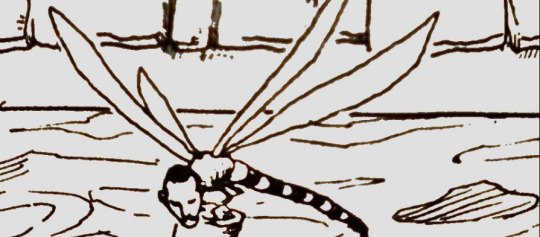
Or his tribute to the most iconic pugilist Mohammed Ali aka Cassius Clay, in the character of Killer Bee. He didn't even miss the famous line said by the man, who "Floats like a butterfly, stings like a bee."

So when I saw the God tree, I wondered if there was some context behind it that I didn't know about. I mean there's a hell lot of literature about trees and their significance in various cultures across the world. Whether it be Judeo- Christian mythology, South East Asian mythology, Germanic mythology or Celtic polytheism, Greek and Egyptian mythologies.
Japanese culture is no different, in fact they have a whole host of myths regarding trees, they have deep roots found in the concepts of both spirituality and doom, being considered indicators or harbingers of good or bad luck, fortune, having healing properties, and even for entertainment.
'Yokai' is a Japanese term that roughly translates into supernatural beings.
Yokai is a difficult term to translate into English and you will sometimes see it as demon, monster or goblin. However, yokai is much broader than that and encompass all manner of supernatural phenomena.
'Jubokko' is a kind of Yokai tree, its accounts have been recorded in Japanese folklores.
Sourced from Wikipedia :
According to folklore, Jubokko appears in former battlefields where many people have died, and its appearance does not differ that much from ordinary trees. Since it becomes a yōkai tree by sucking up large quantities of blood from the dead, it lives on human blood. When a human being happens to pass by, it supposedly captures the victim and, changing its branches into the shape of a tube, sucks the blood out of the victim. A Jubokko that sucks life out of human beings in such a way is said to always maintain a fresh appearance.
Sound familiar? We can see how Kishi might have drawn inspiration from this phenomenon, and who wouldn't, all of it sounds scrumptious. Creepy Japanese folklores and urban legends are just amazing and bone chilling to read about. Quite a lot of fun.
You know who famously contributed to Yokai art and made it really really popular in Japan?
Hokusai.
These are some of his Yokai woodblock prints.

Really, how delicious is this?
Yep, this is the same dude who created the most iconic and recognisable set of woodblock prints to come out of Japan, known all over the world as:
'Thirty six views of Mount Fuji'.
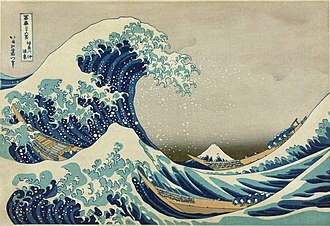
So we can certainly see the influence and the underlying concept behind Kishi's designs. And it's not just Kishimoto, other artists have also been inspired by tree folklores. Take Miyazaki in his 'My neighbour Totoro' (I can't put in words how much I love that film) wherein Totoro is depicted as a supernatural being taking the form of a camphor tree, or Princess Mononoke, the inclusion of the concept of Kodama, tree spirits that reside in special trees in ancient forests, a concept drawn from Shintoism.

However, a few days ago, I was doing a rerun of my favourite Monty Python's movies. By the way, shout out to my fellow Monty Python fans, you guys have the best taste.
So at the time, I was watching 'Life of Brian'. And guess what I found when I was watching the credit roll.
Look familiar???
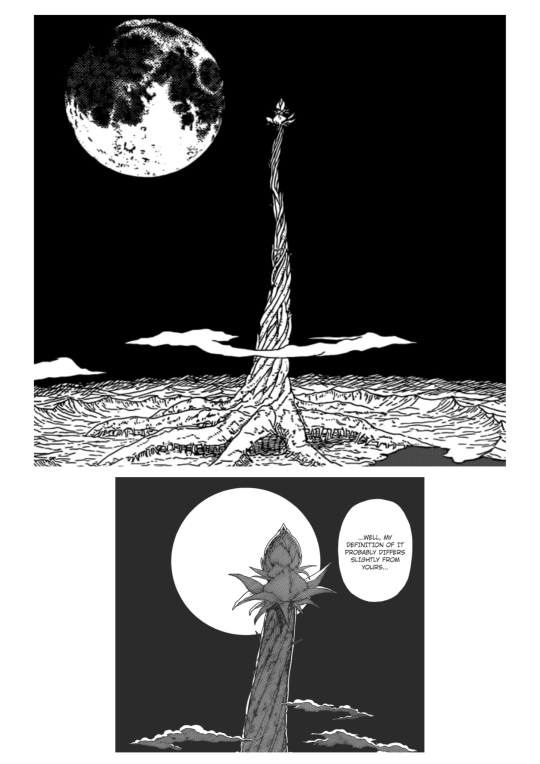
Lol.
And I was intrigued. Really Kishi? Monty Python? Seriously? You? But well, not like you haven't taken me by surprise before. And Monty Python has been seriously popular all over the world for over fifty years. But I couldn't reconcile the thought of the Japanese appreciating the kind of humor that Monty Python pushes. If you have seen Monty Python, you know what I mean. But I was again proven wrong, and I couldn't be happier about it.

Apparently, Monty Python has been so popular in Japan, even Eric Idle couldn't help showing up for it. Honestly, I am not really that surprised after all. Monty Python is awesome. Hell, if I were reeling from a devastating war, I would religiously watch Monty Python too.
Ah, Kishi, peeling off those layers in your manga, quite a task, but worth it, heh?
Monty Python's style of animation and art was quite revolutionary at the time it was first featured. It started as a placeholder back in the days when Monty Python Flying Circus was just taking flight on BBC, but look how far it has come. And aren't we all the better for it?
I could still be missing something, but the theory still seems quite plausible to me. And I doubt there will be many counter points to something like this. This is what I am going to believe nevertheless. I like it, I like it very much. Kishi, you got good taste. But well, we already knew that.
P.S. - This again goes to show how ridiculous the opinion is that a professional artist can write or draw something accidentally. NOTHING is accidental. It's just that YOU in all your ignorant ass glory don't know what lies underneath. Or overneath really, you guys are seriously lame. People who say shit like this have no idea, NONE, about the kind of effort and inspiration that goes into creating art. Like I don't know how long you are gonna delude yourself, but why cut off your nose to spite your face? Is it really worth it? Tch.
#naruto#Kishimoto#infinite tsukuyomi#monty python#hokusai#superflat#freddie mercury#miyazaki movies#mohammed ali#my neighbour totoro#princess mononoke#deidara#killer bee
105 notes
·
View notes
Text
Official Guide to Jotuzons
The Jotuzons are an alien species of giant females that inhabit the distant planet of El-Doe. They are mostly referred to by humans as "giants." Their species name is an amalgam of Jotun (Giants of Scandinavian folklore) and Amazon (legendary female race of Greek Mythology).
Appearance / Biology:
The Jotuzons are described as beautiful, giant creatures all ranging from 50 to 65 feet in height. They all resemble human females of different ethnicities, and they're born with unique subparticles in their bodies that help them support their own massive weight and to move as fast as humans. The body of a giant is anatomically different then that of a human's. They have blue tongues, blue hearts, their eye colors range from baby blue to deep purple, and the entire species has a blue-purple color scheme. They have thicker skin that helps them endure extreme temperatures, and two beating hearts that help them operate at their natural giant scale. Their freckles and birthmarks (light blue stars on their arms) can glow with bioluminescence when they feel emotions like excitement or anger. There have been theories of the Jotuzons having been descended from the stars, and thus gaining star-like speckles all over their skin.
Racial Groups:
Jotuzons of Brindle descent resembles humans of African-American and Melanesian descent.
Jotuzons of Frannus descent resembles humans of European and Caucasian descent.
Jotuzons of Nell descent resembles humans of East Asian, South Asian, Southeast Asian and Pacific Islander descent.
Jotuzons of Marri descent resembles humans of Native American, Middle Eastern, Taino and Polynesian descent.
Language:
In ancient times, the Jotuzons spoke in their own native language, named Jotuzonian. Neither humans nor Jotuzons were able to understand each other at first contact, but they slowly (over a span of months) began to adapt English in their language as they bonded with humanity, and thus breaking the language barrier for good. In modern times, some Jotuzons still prefer to speak Jotuzonian, and often go back and forth between Jotuzonian and English.
Relationship with Humans:
The Jotuzons have a turbulent connection with humanity. They used to inhabit the Earth and co-exist with the Earthlings for a brief period of time, but they left the planet after being overwhelmed with the violent wars and paranoia towards the unknown. However, some Jotuzons are willing to accept humans for all of their strengths and weaknesses, and give Earth another chance. Some Jotuzons considered humans to be insignificant pets or toys, due to their tiny size, and others are aware of their destructive, violent nature back on Earth, and others are very peaceful and understanding towards humans.
Concept art of El-Doe:



7 notes
·
View notes
Text

I've been working on this project with Sha for almost a year now and it seems unbelievable that we're about to launch so soon!!
I realized that I tend not to share a lot about my inner workings, as I'm so used to communicating via art, but there's so much I want to talk about in regard to the conception and process of TO11.
When I was a child, I had always been into mythology, fairytales and folklore from all places, especially Greek and Norse mythology as those were always popularized and easily accessible. Growing up in SEA, I was always told tales from Malaysia and the countries surrounding us, but as I grew older, I started to wonder why South East Asian folklore wasn't as popular as Greek or Norse myths even though we also had stories that were equally as interesting and captivating.
This led me down a rabbit hole of learning about the history of S.E.A and how due to war and colonization, so much of our cultural history has started to disappear since most of our stories are passed down orally. This motivated me to start working on the development of Tales and Oracle of Eleven with my friend Sha Roose, who I asked to be a writer for the anthology.
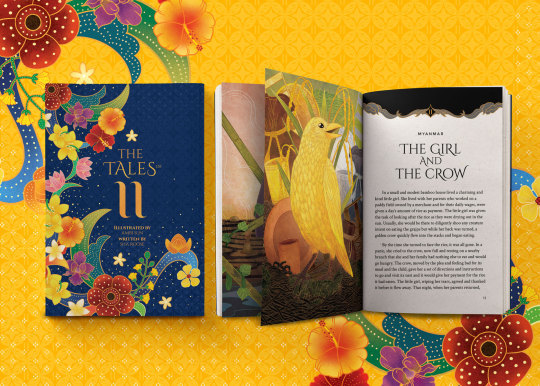
Collecting stories from different countries was quite a challenging task, especially since many of these stories were passed down through oral tradition and have been scarred by the painful effects of colonization. In some countries, we see local stories, once woven into the fabric of their communities, systematically erased and slowly forgotten. Despite facing resource limitations, Sha approached the research and writing with great care, making sure to select stories that were not widely known and focused on ones featuring diverse protagonists, intriguing outcomes, and meaningful analogies.
I'm so happy to be able to invite 11 artists from these 11 countries as well to participate in this project. Besides making art for us, the artists also graciously allowed us to interview them and to get their lived experience of being SEA be it if they are still living there or living overseas as Diasporas. I've learnt so much from them, like did you know Timor Lorosa'e ( commonly known as Timor-Leste ) just gained their independence in 2002?

Anyways, this project has taken about 2+ years to make, and even now I'm still working on the art. ( 64% completed ) Sha and I have truly poured our hearts into this project and If you're still here, thank you for reading this all the way, I really appreciate it.
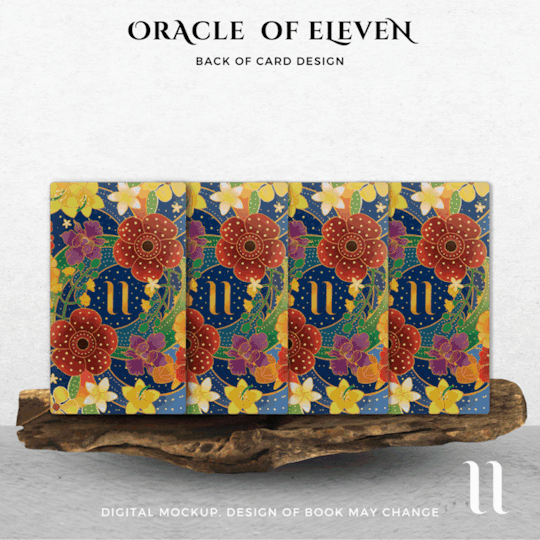
We're about 11 days away from the launch on Kickstarter, and if you can, please follow us there and share the project! Also, a quick reminder that we will be doing extremely limited quantities of early bird bundles so hit the notify me button on Kickstarter to be the first to know when we launch on the 11th of July, 11:11am EST!
Follow us here
#indie oracle deck#ownvoices#south east asian mythology#folklore#mythology#anthology#south east asian folklore#kickstarter project#not me tearing up writing about this project because i love it so much#i just want to tell our stories like they're so cool and interesting!!#south east asian stories#reblogs appreaciated
183 notes
·
View notes
Text

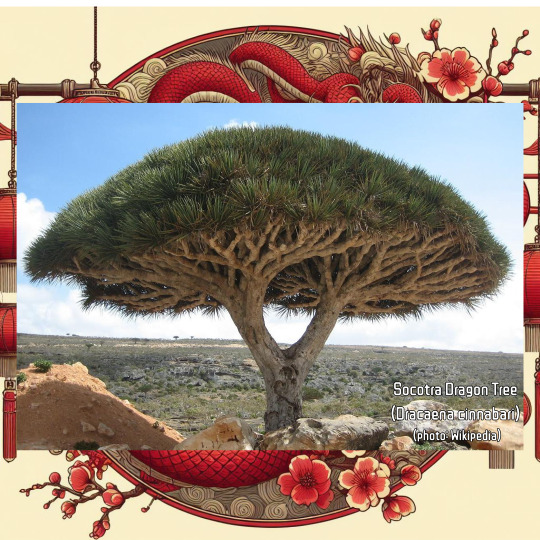


Dragons of the Plant World
Happy Lunar New Year of the Wood Dragon! The Lunar New Year is a major cultural event celebrated in Asia and across the world. The year of the wood dragon begins on February 10th 2024 and concludes on January 29th, 2025. The Asian dragon or “Loong” is a noble, benevolent creature unlike the destructive monsters of Western folklore. Let’s meet some plants named after dragons!
A whole genus of monocot trees is named after dragons, namely the genus Dracaena which includes 120 species of trees and succulent shrubs native to Africa, South Asia, Australia, and Central America. The name Dracaena is derived from a Greek word meaning “female dragon”. It is unclear why these trees are named after dragons, but their spiky foliage and scaly trunks may recall the typical traits of western dragons. Additionally, the Socotra Dragon Tree (Dracaena cinnabari) yields a red resin known as “Dragon’s Blood” which was harvested from these trees since ancient times and used in the Mediterranean and the Middle East for dye and medicines. Several Dracaena species including Dracaena marinata are popular houseplants since they require minimal water and can tolerate low light levels in indoor environments.
Dragonfruit is a tropical treat that comes from a cactus. The Dragonfruit cactus is a general name for one of three species in the Selenicereus genus and is commonly known as the Pitahaya or Moonlight Cactus. These night-blooming lanky cacti are epiphytic and lithophytic, meaning they grow on trees and stones instead of rooting directly into the ground. Their hot pink or yellows fruit have dragon-like fleshy scales and an interior that can be either white or red. Although they were originally cultivated in South America, Vietnam is now the main producer of Dragonfruit. The fruit is rich in dietary fibre, vitamin C, betalains, and carotenoids.
Snapdragons (Anthrrhinum genus) have flowers with cute dragon-like snouts that open and close like a mouth when pressed sideways. These perennial flowers add fiery hues like yellow, orange, red, and pink to cottage gardens of Northern Europe and are a favourite of bees. The Snapdragon (A. majus) is a model organism for plant biology research, especially biochemical studies and developmental biology as well as research on plant-pollinator interactions.
I hope the Year of the Wood Dragon brings new growth to you and your plant collection!Features photos from Wikipedia along with my original AI-generated art made with DALL E.
#katia plant scientist#botany#plant biology#plants#plant science#dragons#dragon#chinese dragon#asian dragon#chinese mythology#lunar new year#chinese new year#year of the dragon#year of the wood dragon#new year#dragon tree#dracaena#dragon blood#socotra#red dye#dragonfruit#dragon fruit#pitaya#pitahaya#cactus#south america#fruit#tropical fruit#snapdragon#flowers
6 notes
·
View notes
Text
Dune and Avatar without Orientalism
Orientalism is something that’s used to describe western ideas about what eastern cultures are like, not so much eastern cultures as they really are. Initially used to describe western ideas about Middle Eastern cultures, this has been expanded to critique western (and in my case at one point, westernised) ideas about Far Eastern cultures. This shows you how malleable and adaptive this critique is, given it’s useful for deconstructing western ideas about nonwestern cultures. When it comes to Dune and similar stories, they’re oftentimes western ideas about Middle Eastern cultures and in Dune’s case, Middle Eastern coded cultures.
Not that there can’t be any black people speaking Arabic, being Muslim and stuff but in the case with Africa itself, the sub-Saharan cultures and communities most likely to be this Arabicised are usually those with a lot of Muslims (including cultural ones at that). At any rate, even if Dune were to continue having black people be influenced by Islam and Arabic culture, any Arabicised sub-Saharan community would have more in common with the Senegalese Wolof and the Nigerian Hausa and Fulani. All three of them are actual African folks who are both Muslim and Arabicised over the centuries.
That both Nigeria and Senegal are in close proximity to North Africa would make the path to Arabicisation more organic and immediate if because it’s just around the corner, it would that easy for both Arabicisation and Islam to spread and take hold of other parts of Africa this way. One would wonder if Denis Villeneuve, the latest person to adapt Dune in any way, is ignorant of the real sub-Saharan cultures that are Arabicised that would’ve been used to inspire his take on the Fremen, that planet’s people by the way.
If he did along with having actual Nigerians and Senegalese onboard, then the Fremen would have far more in common with real African communities than it does with the fevered Orientalist imaginings that prevail in every version of Dune. Conversely speaking, an Avatar series without Orientalism would be rather alien. Alien in the sense that although the Avatar series takes place in countries that are influenced by East Asian countries, there are western undertones to the way it depicts things sacrosanct to their cultures. Especially when it comes to dragons.
In the world of Avatar, dragons are associated with fire. But in Chinese thought, dragons are associated to water and weather. Not to mention the Azure Dragon is one of the four celestial beasts and linked to both wood and the east, just as the Black Turtle is linked to the north and water, the White Tiger to metal and west and the Red Bird to the south and fire. If there’s any creature in the Chinese folkloric bestiary that’s linked to fire in any way I know of, it would be the Red Bird that’s most deserving of where the firebenders got their powers from.
To go a little further with the (earlier) Chinese conception of geography, firebenders should live in the south as it’s the cardinal direction that fire’s linked to. Conversely speaking waterbenders would live in the north, per its association with water whereas the airbenders would live in the east but that’s because wind is subsumed under wood (perhaps an early Chinese understanding of how plants give off air and that both penetrate something) and wood is linked to the east. Metalbenders would be associated with the west, per the element’s cardinal direction.
But I feel this involves a deeper knowledge and understanding of a foreign culture, how it sees the world as and why it believes the way it does. Supposing if the Philippines were to become more heavily influenced by China, then the Chinese undertones would come off more organically/naturally since China’s just around the corner enough to have it take off. Okay this is my bias coming through, getting interested in Chinese geography and stuff. But you should know how I feel since I’m getting leery of western colonialism and its impact on the Philippines, since I feel it’s far too westernised for its own good. I even think westernisation hasn’t done the Philippines any favours, if I were honest about this at all.
Maybe that’s why I feel more drawn to China and the like, I feel the Philippines is too westernised for its own good. Perhaps my growing distaste for Orientalism goes hand in hand with my distaste for the Philippines’s westernisation, it feels more like a westerner’s idea of Asia especially when it goes hand in hand with colonisation. I feel more drawn to East Asia, perhaps as an attempt to decolonise and dewesternise myself. If only the Philippines were to be sinicised, I would feel the full force of dewesternisation in any way I’ll appreciate.
It wouldn’t stop other countries from having orientalist imaginings of nonwestern countries and communities, at any rate if Russia were to replace America as the centre of the west it would still be prone to Orientalism. Russia itself was prone to Orientalism, as far as Central Asian countries were concerned. There was Orientalism when Turkey was a superpower well onto the early 20th century, there will still be an Orientalism in the future. But I feel any country that’s actually influenced by a nonwestern superpower that would feel genuinely nonwestern.
Perhaps in ways westerners don’t imagine and immediately understand, despite their best because they themselves don’t have much of a deep understanding of and interest in these cultures. Something I struggled with and finally overcame in a way.
#orientalism#dune#avatar the last airbender#atla#decolonisation#china#the philippines#philippines#nigeria#senegal
6 notes
·
View notes
Text
Herbal Glossary!
A
Anise Hyssop
Origin: The name comes from the Greek word hyssopos and the Hebrew word for Azob, a holy herb used for cleaning sacred places. Hyssop is native to southern Europe and the Mediterranean.
Benefits: Create a delicious tea to help relieve symptoms of the common cold, such as congestion.
Arnica
Origin: Arnica has been used for its many healing properties for centuries, since its discovery by goat herders who noticed their goats went up the mountains in search of its flowers to heal themselves after falling or stumbling.
Benefits: Arnica can help reduce bruising and swelling, as well as muscle soreness from exercise or sports injuries.
Ashwagandha
Origin: In Ayurvedic healing tradition, ashwagandha is recognized as one of the most powerful herbs. Use of this root can be traced back for over 3,000 years.
Benefits: This is an adaptogenic herb that can be used to strengthen your immune system and to target the negative effects that stress takes on the body.
Astragalus
Origin: Astragalus is a foundational herb in Traditional Chinese Medicine to support one’s Chi.
Benefits: Use astragalus to support a weakened immune system.
B
Blue Lotus
Origin: Blue Lotus was prized above all other plants by the Ancient Egyptians. The plant was associated with the Sun God Ra as the bringer of light.
Benefits: Use Blue Lotus to calm the nerves and brighten your mood.
C
Calendula
Origin: Calendula has been considered a magical herb for centuries. Ancient Egyptians used it for their skin, the Greeks and Romans used it as a culinary herb, and in ancient and modern India it is used in wedding ceremonies.
Benefits: Use Calendula to support healthy skin, cure stomach ailments, and in culinary dishes.
California Poppy
Origin: The early Spanish settlers of California saw the California Poppy lighting up the coastal hillsides, and it is said they could guide their ships by the sight.
Benefits: Use California Poppy as a tincture for mild sedative and analgesic effects and also as an anxiolytic (anti-anxiety remedy). California Poppy contains no opiates, and is non-addictive and safe.
Chaga
Origin: Chaga has been recognized for thousands of years as a powerful healing mushroom. Ancient Asian Folk Medicine practitioners relied on it for balance, and to boost the immune system. Chaga also has a long history of use in Russian and Siberian folklore and herbalism.
Benefits: Use it in a tea to boost immunity, energy, and reduce inflammation.
Chlorella
Origin: Known as the “Jewel of the East”, chlorella is a genus of single cell freshwater green algae which is comprised of organisms that have survived as a life form for billions of years.
Benefits: Use chlorella to detoxify, support your immune system, and aid in digestion.
Cordyceps
Origin: According to legend, yak herders in the Himalayas of Tibet and Nepal noticed that their yaks grazed on a certain mushroom, they suddenly become very energetic and playful.
Benefits: Use Cordyceps in a tincture or powder to increase energy, detoxify the body, stimulate the immune system, and as an overall tonic for the body.
D
Damiana
Origin: Damiana has been used since the times of the Aztecs in Mexico, Central America, and South America. Originally taken during religious ceremonies, it was later banned due to its "passion inspiring properties."
Benefits: Damiana helps to boost libido and is known as an essential aphrodisiac.
Dandelion
Origin: Dandelion's common name was apparently invented by a 15th century surgeon, who compared the shape of the leaves to a lion's tooth, or dens lionis.
Benefits: Both the Dandelion leaf and root have been used for centuries in traditional medicine to treat liver, gallbladder, kidney ailments, weak digestion and rheumatism.
E
Echinacea
Origin: Echinacea was the primary medicine of the North American Indians, who used root poultices for wounds, bites, stings, and snakebites.
Benefits: Use Echinacea as soon as you feel a cold coming on for powerful immune support.
Elderberry
Origin: “Father of medicine” Hippocrates recognized elderberry’s gifts as early as 400 AD. Elderberry was often called the “medicine chest” of the country folk.
Benefits: Elderberry is often used for its ability to boost and balance the immune system and quell coughs, colds, flu, and bacterial and viral infections. Make your own syrup or take as a tincture.
Elecampane
Origin: Elecampane is reputed to owe its genus name "Inula Helenium", to the fabled beauty Helen of Troy.
Benefits: Elecampane is wonderful for respiratory health, for digestive health, and can be used as an anti-parasitic.
F
Fennel
Origin: Fennel crops up in Greek mythology, when humanity received a fiery coal from Mount Olympus in a fennel bulb. Hippocrates talked about the medicinal powers of fennel to treat infant colic.
Benefits: Fennel Seeds help to relax the smooth muscles of the digestive system, which stimulates bile flow and reduces pain associated with digestion.
G
Ginger
Origin: In Ayuverdic medicine, ginger is called the “universal medicine.” In Chinese Medicine for over 4,000 years, Ginger was used to treat nausea, dysentery and to act as an overall digestive stimulant.
Benefits: Use ginger to soothe an upset stomach, a cold, or a case of the flu. Take in tincture form, cook in its dried or fresh form, or brew as a tea.
Gotu Kola
Origin: Gotu Kola is an Ayurvedic herb that was first used in India where it has a reputation for rejuvenating the body and mind. Gotu kola is said to also develop the crown chakra.
Benefits: Use this herb in a tea to enhance concentration and memory.
H
Hawthorn Berry
Origin: Hawthorn is a symbol of love and union. The Hawthorn tree is steeped in Celtic mythology and history, with many believing that the trees were inhabited by the Faery Folk.
Benefits: Use Hawthorn Berry in a tincture or tonic for heart health and improved circulation.
I
J
Jasmine
Origin: The name “Jasmine” derives from the Persian word Yasmin, meaning "Gift from God.” The flower is sacred in India and the Himalayas.
Benefits: Use Jasmine’s uplifting scent to help boost mood. Jasmine is wonderful as a tea or infused in oil.
L
Lavender
Origin: Lavender is probably the most well known medicinal herb. Originally from France and the western Mediterranean, lavender is now cultivated worldwide.
Benefits: Lavender can be used as a sleep-aid, to help heal wounds and burns, and to quell anxiety.
Learn More
Lemon Balm
Origin: Also known as “Sweet Mary,” “Honey Plant,” and “Cure-All,” this herb has been cultivated as a culinary and medicinal plant for over 2,000 years.
Benefits: Use Lemon Balm to combat anxiety, treat wounds, and soothe indigestion.
Linden
Origin: Linden is included in the folk stories and mythology of many different European cultures. In the symbolism of flowers, linden is a symbol of conjugal love, sweetness, peace and happiness.
Benefits: Linden flowers have been used traditionally for colds, cough, fever, infections, inflammation, high blood pressure, and headache.
Lion's Mane
Origin: Lion’s Mane has been a staple in Traditional Chinese Medicine for centuries. It’s also known as “deer’s tail,” “satyr’s beard,” and even the “pom pom” mushroom.
Benefits: This mushroom has adaptogenic properties and may protect against dementia, reduce mild symptoms of anxiety and depression and help repair nerve damage.
M
Maca
Origin: Maca was first utilized by the Incas in Peru. Maca root grows in the mountains of Peru at high altitudes of 7,000 to 11,000 feet, making it the highest altitude growing plant in the world.
Benefits: Use Maca as a mood and libido booster, or a hormone stabilizer. Add in powder form to coffee, teas, or smoothies.
Marshmallow
Origin: Stems of marshmallow were originally peeled to reveal the soft and spongy pith. This pith was boiled in sugar syrup and dried to produced a soft, chewy confection.
Benefits: As a demulcent it is an agent that forms a soothing film over mucous membranes, relieving minor pain and inflammation of the membrane.
Matcha
Origin: Matcha can be traced back to the Tang Dynasty in China, where citizens would steam tea leaves into bricks, making it easier to transport and trade.
Benefits: Matcha is great for boosting the metabolism and is a wonderful alternative to coffee. It is filled with antioxidants and is rich in fiber.
Mimosa Flower
Origin: Mimosa has been called “the happiness flower” and is used in Traditional Chinese Medicine to cleanse the heart and liver meridians (energetic pathways) in the body. Mimosa tree bark is also used as a common remedy for generalized muscular discomfort and swelling.
Benefits: Use Mimosa Flower for emotional relief, especially from grief or anxiety.
Mucuna Pruriens
Origin: Mucuna Pruriens is classified in Traditional Chinese Medicine as a jing enhancing herb. Jing loosely translates as “life force” or “vital essence."
Benefits: Mucuna Pruriens can be used to increase libido, support brain health, and boost mood. Drink as a tonic or in put in smoothies, teas, and coffee.
Mugwort
Origin: Around 1,000 years ago, medieval brewers used Mugwort to make a beer or ale called "gruit.” Mugwort is called the “Mother’s Herb” and is traditionally used for dreamwork.
Benefits: Use this herb to aid in lucid dreaming, help regulate periods, and alleviate joint pain.
N
Nutmeg
Origin: Nutmeg has a long history of use as a spice, with recorded evidence that the ancient Romans and Greeks enjoyed its warm, aromatic flavor and aroma.
Benefits: Use nutmeg to relieve pain, soothe indigestion, relieve insomnia, and improve brain function. Nutmeg can also help protect the liver, improve cholesterol levels, and regulate blood levels.
O
Oat Straw
Origin: Archaeological studies show that oats have been found dating from 2,000 BCE and have been used ever since as a valuable source of human and animal nutrition.
Benefits: Uses include helping to balance the menstrual cycle, to treat dysmenorrhoea, for osteoporosis and urinary tract infections. Drink in an herbal infusion for maximum benefits!
P
Peppermint
Origin: Peppermint was used in ancient Roman, Greek, and Egyptian cultures in both culinary and medicinal forms.
Benefits: Use Peppermint as a digestive aid to soothe stomach pains and indigestion.
R
Red Clover
Origin: Red clover has been used for 400 years in anti-cancer formulas.
Benefits: Because of red clover’s concentration of the phytoestrogens daidzein and genistein, which mimic the activity of estrogen, red clover has been studied for its use in alleviating the discomfort of menopause.
Reishi
Origin: The Reishi Mushroom is one of the most valued plants in traditional Chinese medicine, and is described alongside Ginseng as one of the two most important elixirs.
Benefits: Use Reishi for an immune system boost, improved liver function, and to restore hormonal balance.
Rose
Origin: The Greeks, Persians, and Romans all used roses as medicine. The botanical name of the Wild Rose, rosaceae canina reflects how the Romans used it to help treat rabid dog bites.
Benefits: Roses have astringent, anti-viral, anti-bacterial, and diuretic properties.
Rosemary
Origin: Usage of rosemary dates back to 500 b.c. The ancient Greeks and Romans used it as a culinary and medicinal herb.
Benefits: Rosemary can be used for improved concentration and improved digestion. It may help alleviate muscle pain, boost the immune and circulatory system, and promote hair growth.
S
Saffron
Origin: Traditional healers have historically used saffron to treat heartache, hemorrhoids, and other kinds of inflammation. Cleopatra was said to bathe in saffron-infused mare’s milk before seeing a suitor.
Benefits: Saffron can be used as an aphrodisiac, asthma, dry skin, heartburn, and for baldness.
Sage
Origin: In ancient Rome, the herb was used to heal ulcers, stop the bleeding of wounds, and to soothe a sore throat. The Chinese used sage to treat colds, joint pain, typhoid fever, and kidney and liver issues.
Benefits: Sage is known to lower cholesterol, and is a tonic for the liver. Sage is helpful for women’s health, specifically pain from menstruation.
Schisandra
Origin: Chinese folklore and Traditional Chinese Medicine says that Schisandra can "calm the heart and quiet the spirit.”
Benefits: Add Schisandra to your home apothecary for a powerful anti-anxiety tool.
Shilajit
Origin: Shilajit has been known and used for centuries in Ayurvedic medicine as a rejuvenator and anti-aging compound.
Benefits: Shilajit is useful in the treatment of kidney stones, edema, and hemorrhoids, and as an internal antiseptic.
Spice Bush
Origin: Native Americans originally used the bark, twigs and berries to make teas that could help treat colds, fevers and rheumatism.
Benefits: Make a warming and stimulating tea from spice bush to help with both digestion and circulation.
Stinging Nettle
Origin: Stinging nettle, or Urtica dioica, is a flowering plant that is found worldwide. It is native to northern Africa, North America, Asia, and Europe.
Benefits: Use Stinging Nettle in a tea to reduce inflammation, help with hay fever, and aid in stabilizing blood sugar levels.
T
Thyme
Origin: Thyme’s name is from the Greek word thymos, meaning “strong.”
Benefits: Thyme can be used as a nervine herb (to relieve stress) or to help heal respiratory infections. It can also improve digestion and has antibacterial properties.
Tremella
Origin: Tremella comes to us from Traditional Chinese Medicine for overall immune health.
Benefits: Use it to help aching joints or muscles, or for complexion and skin health.
Tulsi
Origin: Tulsi or ‘Holy Basil” comes from the healing tradition of Ayurvedic medicine.
Benefits: In herbalism, Tulsi is considered to be an adaptogen. Adaptogens can help your body adapt to stress and restore balance. Tulsi is especially good for pain relief, digestive support, and respiratory health.
Turmeric
Origin: Turmeric has been used in ancient Ayurvedic medicine as a cleansing herb.
Benefits: Turmeric can aid in reducing overall inflammation and improve digestion. Cook with tumeric, make into a tonic, or take as a tincture!
U
V
Valerian
Origin: Valerian has been used as a medicinal herb since at least the time of ancient Greece and Rome.
Benefits: Valerian can be used to ease insomnia and anxiety, reduce pain, and as a muscle relaxant.
W
Witch Hazel
Origin: Native Americans have long used the twigs and bark of witch hazel as a medicinal herb for a wide variety of ailments.
Benefits: Brew it in a tea to treat a sore throat or common cold.
Wood Betony
Origin: The name Betony comes from Celtic where Bew meant “head” and Ton meant “good.”
Benefits: Wood Betony was originally used by both Native Americans and Europeans for its medicinal and aphrodisiac qualities. Use it for headache relief, or as an aphrodisiac.
X
Y
Yerba Santa
Origin: It was given its name, “holy weed,” by Spanish priests impressed with its properties.
Benefits: Yerba Santa is used for respiratory conditions including coughs, colds, tuberculosis, asthma, and chronic bronchitis
To learn more, check out this link that I borrowed this info from:
Or check these out, link is below:
ACACIA POWDER - GUM ARABIC
Treats respiratory illness and diarrhea; magical uses: Protection, psychic and spiritual enhancement, money, platonic love, and friendship.
ACTIVATED CHARCOAL - COCONUT SHELL
Emergency toxin removal; teeth whitening; aids kidney health; treats diarrhea and skin infection
ALFALFA POWDER - MEDICAGO SATIVA
Revitalizes digestive tract and colon. Decreases irritability and nervousness. Combine with peppermint to make a tonic for the stomach; magical uses: Money, prosperity, anti-hunger
ALKANET - ALKANNA TINCTORIA
Provides natural red tint to cosmetics, heals wounds; magical uses: Purification, prosperity. Protects from snakebites and helps ease fear of snakes
ALLSPICE - PIMENTA DIOICA
Digestive aid; anti-inflammatory and pain reliever; Immune booster; promotes oral health; Magical: Money, luck, healing, obtaining treasure.
ALOE
Used as far back as Ancient Egypt, Aloe Vera heals wounds and relieves sunburn. Part of Cleopatra's daily beauty routine, aloe can be beneficial to many skin issues including psoriasis and acne. It has anti-inflammatory properties can also be topically applied for relief from aching joints and tendonitis. Magical uses: Protection and luck.
ANISE SEEDS (PIMPINELLA ANISUM)
calms and builds the nervous system; natural remedy for gas, bloating, cramping, and digestive issues; breaks down mucus- good for bronchitis and asthma; pain-relieving (especially coughs, GI issues, and menstrual cramps). Emotionally good for nervousness and insomnia; Magical uses: Used to help ward off the evil eye, find happiness, and stimulate psychic ability.
ANISE STAR PODS - WHOLE - ILLICIUM VERUM
Decongestant and expectorant
ANNATTO SEED (GROUND) - BIXA ORELLANA
Treats diabetes, diarrhea, fevers, and fluid retention. Use topically for burns and vaginal infections.
ARROWROOT POWDER
Contains potassium, iron, and vitamin B; promotes heart health and boosts immunity; treats toothaches and gum soreness (give babies arrowroot cookies for teething); magical uses: Purification and healing
ASHWAGANDHA ROOT
Ashwagandha is an adaptogenic herb from India that is used for supporting endocrine function, immune function, brain function, whole-body revitalization and emotional balance. This tonic herb is widely used for stress relief, hormone balance, supporting mental health, aiding restful sleep and imparting a sense of holistic wellbeing. Whether you are anxious or fatigued, ashwagandha supports balance and can aid the body, mind and spirit in returning to equilibrium and vitality.
ASTRAGALUS ROOT - POWDER - A. MEMBRANACEUS
Astragalus is a prized adaptogenic herb in Traditional Chinese Medicine, lauded for its whole-body rejuvenative and protective properties. It is used as a longevity tonic and to strengthen and protect metabolism, digestion, immunity, energy levels, skin health and whole-body health.
ASTRAGALUS ROOT - SLICES - A. MEMBRANACEUS
Magical uses: Protection and energy
BASIL LEAF - OCIMUM BASILICUM
Named after the Basilisk, Ancient Greek lore claimed that this herb could cure the creature's petrifying stare and used it to treat snake bites and insect stings. Also traditionally used to detoxify from cannabis in India and the Middle East, Basil can detoxify from drugs that store themselves in fat cells. Can increase sex drive and promote menses. Magical Uses: Love, exorcism, wealth, sympathy, and protection. Dispels confusion, fears & weakness.
BAY LEAF - LAURUS NOBILIS
Contain vitamins A & C, iron, calcium, potassium, and magnesium; include in food regularly to promote general health; tea is good for migraines (infuse 3 leaves and juice of 1 lemon in hot water); Magical Uses: Protection, good fortune, success, purification, strength, healing and psychic powers. Also, the herb of poets and the god Apollo (Sun).
BEET ROOT POWDER - BETA VULAGRIS
Builds the blood and cleanses the liver. High glucose content. Magical uses: Love Spells
BLACK PEPPERCORN - PIPER NIGRUM
reduces inflammation; full of vitamins and minerals; helps with nutrient retention; Banishing negativity, exorcism, and protection from evil.
BLACKBERRY LEAF
helps with diarrhea, sore throat, and ulcers; wards off evil spirits; Magical Uses: Healing, protection and money
BLOODROOT - POWDER - SANGUINARIA CANADENSIS
Expectorant; Fights bacteria and inflammation
BLUE COHOSH ROOT
rheumatism; American Indian female remedy: cramps, back pain, menopause, amenorrhea; used for nerves and spinal injury; depression and brooding; Magical uses: Empowerment, purification, money drawing, love breaking, and driving away evil.
BORAX POWDER - NATURALLY SOURCED
Cleaning agent and natural pesticide
CACAO BEANS - THEOBROMA CACAO - ROASTED
Cacao is renowned for its anti-inflammatory, nervous system boosting, and stress reducing effects. It's consumption can promote feelings of wellbeing and bliss. The scientific name means "food of the gods", after all!
CACAO POWDER - ROASTED, FAIR TRADE
Cacao is renowned for its anti-inflammatory, nervous system boosting, and stress reducing effects. It's consumption can promote feelings of wellbeing and bliss. The scientific name means "food of the gods", after all!
CALAMUS ROOT - POWDER - ACORUS CALAMUS
Used by Native Americans as "the Singer's Herb" calamus primarily targets the trachea. Good for laryngitis, halitosis, sinus congestion, asthma, and chronic cough. Magical Uses: Luck, money, healing, and protection
CALENDULA FLOWERS - CALENDULA OFFICINALIS
The beautiful, sunny calendula flower contains potent anti-inflammatory and anti-viral properties and has a variety of uses. Calendula can be used to speed healing of wounds and skin irritations and also as a tea for a variety of health benefits. Magical Uses: Protection, legal matters, and psychic/spiritual powers
CARAWAY SEED - CARUM CARVI
Historically known to prevent things, lovers, and pigeons from straying. Caraway is one of the "four greater hot seeds" of Greek medicine used to stimulate digestion (along with fennel, anise, and cumin). Magical Uses: Health, love, protection, mental powers, memory, passion, and anti-theft. Fidelity in love spells.
CARDAMOM PODS - ELETTARIA CARDAMOMUM
Clears the mind; treats coughs, colds, and asthma; treats bloating. gas, and indigestion; treats sickness from damp, hot weather; Magical Uses:Lust, love, and fidelity
CAROB, ROASTED - CERATONIA SILIQUA
"the singer's herb", cleanses the throat, good for weight loss and stomach settling; Magical Uses: Health and protection
CASSIA CINNAMON - CHIPS - CINNAMOMUM SP.
Anti-diarrheal, treats nausea, abdominal cramping, and gas; helps with menstrual and postpartum issues; staunches bleeding; Magical Uses: Spirituality, success, healing, protection, power, love, luck, strength, and prosperity.
CATNIP - NEPETA CATARIA
fever reducer; calming; promotes sleep and digestion; helps with morning sickness; makes cats happy and spunky; Magical uses: Sacred to Bast; should be used in any ritual involving cats or cat deities. Use with rose petals in love sachets. Use in sachets and spells designed to enhance beauty or happiness. Provides protection while sleeping.
CEDAR LEAF - THUJA PLICATA
Strong disinfectant; expectorant; treats fungal skin conditions like athlete's foot and ringworm; Magical uses: Confidence, strength, power, money, protection, healing and purification. Used in the consecration of magick wands.
CELERY SEED - APIUM GRAVEOLENS
cooling and sedative diuretic; aids kidney function; helps with arthritis, aches, and pains; Magical Uses: Mental and psychic powers, concentration.
CHAMOMILE - POWDER - MATRICARIA RECUTITA
Chamomile flowers are powerfully healing, immune boosting and anti-inflammatory. Chamomile is often used in tea for its calming effects. It can also protect skin, lower stress and soothe menstrual cramps.
CHAMOMILE FLOWERS - WHOLE - MATRICARIA CHAMOMILLA
Chamomile flowers are powerfully healing, immune boosting and anti-inflammatory. Chamomile is often used in tea for its calming effects. It can also protect skin, lower stress and soothe menstrual cramps. Magical Uses: Love, healing, and reducing stress.
CHIA SEED - SALVIA HISPANICA
High in antioxidants, fiber, omega-3 fatty acids, and protein; promote cardiovascular health; Magical Uses: Protection and health.
CHILI WHOLE - CAPSICUM ANNUUM
Magical Uses: Fidelity, love, and hex breaking.
CHILI, RED ROASTED - POWDER - CAPSICUM ANNUUM
May help to promote weight loss and relieve pain
CHLORELLA POWDER
Considered a superfood due to its nutrient content; aids in detox
CILANTRO - CORIANDRUM SATIVUM
natural food preservative; increases energy; weight loss; anti-inflammatory and anti-fungal; promotes skin health; Magical Uses: Protection of gardeners; brings peace to the home and helps to attune one with their soul. Magical Uses: Draws friends to the home, customers to the business. Promotes eloquence, persuasiveness, and prosperity. Protects and cleanses the aura. Encourages self-expression and creativity
CINNAMON - CINNAMOMUM BURMANNII - POWDER
Anti-diarrheal, treats nausea, abdominal cramping, and gas; helps with menstrual and postpartum issues; staunches bleeding
CINNAMON STICK - CINNAMOMUM BURMANNII - POWDER
Anti-diarrheal, treats nausea, abdominal cramping, and gas; helps with menstrual and postpartum issues; staunches bleeding
CLOVE POWDER
In small doses, heightens senses and is considered an aphrodisiac. In moderate doses, can be used as a sleep aid and pain killer. Good for toothaches, earaches, indigestion, morning sickness, and impotence. Magical Uses: protection, banishing hostile/negative forces, and gaining what is sought
CLOVES WHOLE
In small doses, heightens senses and is considered an aphrodisiac. In moderate doses, can be used as a sleep aid and pain killer. Good for tooth aches, earaches, indigestion, morning sickness, and impotence. Magical Uses: protection, banishing hostile/negative forces, and gaining what is sought
COCONUT FLAKE - DRIED, UNSWEETENED
High in fiber; raises good cholesterol
COMFREY - SYMPHYTUM OFFICINALE
Contains allantoin which causes cell growth, leading to its remarkable healing properties. Heals wounds and draws out toxins. It has long been used to heal broken bones. Magical Uses: money, safety during travel, and any Saturnian purpose. Use for workings involving stability, endurance, and matters relating to real estate or property.
CORDYCEPS MUSHROOM POWDER
Boosts energy levels and stamina; anti-inflammatory; adaptogenic; anti-aging; performance enhancing; immune boosting
CORIANDER SEED - CORIANDRUM SATIVUM
treats chronic indigestion, bloating, gas, or cramps; Magical Uses: Love, health, immortality, and protection.
DAMIANA - TURNERA DIFFUSA
Aphrodisiac; relieves stress and tension; antidepressant; promotes digestive health; Magical Uses: Lust, sex magick and attracting love.
DANDELION ROOT - TARAXACUM OFFICINALE
Fever reducer; cleanses the liver, gallbladder, and pancreas; use for chronic inflammatory conditions, PMS, and Menopause; sleep aid
DILL WEED - ANETHUM GRAVEOLENS
Treats colic and gas, especially in children; stimulates lactation
DONG QUAI
allergies, headache, congestion; known as the "Empress of Herbs" for it's ability to regulate the menstrual cycle and menopause; aids bone generation (osteoporosis);
DULSE - PALMARIA PALMATA
Promote thyroid and bone health; good source of calcium and potassium; can lower blood pressure and strengthen eyesight; Magical Uses: Lust, harmony in the home, sea rituals and pacifying sea winds.
ECHINACEA AUGUSTIFOLIA
helps reduce cold and flu symptoms, indigestion, dizziness, migraines, UTIs, yeast infections, and fatigue; Magical Uses: Adds powerful strength to charms, sachets, and herb mixes.
ELDER FLOWERS - SAMBUCUS NIGRA, ELDERBERRY, POWDER - SAMBUCUS NIGRA, ELDERBERRIES - WHOLE - SAMBUCUS NIGRA
The Elder tree was called the "Elder Mother", Queen of the Underworld or Faery. Since faeries kidnap human souls, sleeping under the elder or using it's wood to make cradles was deemed perilous. The tree was also associated with the god Pan, the Lord of the Underworld, whose pipes were made from its hollow stems. Elder is one of the primal remedies of European tradition and was widely planted to be used as a "medicine cabinet". Used to treat the flu, colds, and respiratory infections; also used to make a syrup that boosts immune system in winter; "the great infant remedy"- used for croup, respiratory issues; treats anemia and menstruation problems like fibroids; Magical Uses: Sleep, releasing enchantments, protection against negativity, wisdom, house blessing and business blessing. Used in rites of death & dying to protect the loved one during transport to the Otherworld.
EUCALYPTUS - EUCALYPTUS NITENS
Expectorant and antiseptic; used in sinusitis, bronchitis, asthma, pulmonary infection and congestion. Magical Uses: Attracts healing vibrations, great for protection and healing sachets. Use to purify any space.
FRANKINCENSE POWDER - BOSWELLIA CARTERI
Immune boosting, anti-depressant, good for asthma and coughing fits; oil good for skin issues and oral health; Magical Uses: Successful ventures, cleansing, purification. Burn for protective work, consecration, and meditation. Used as an offering at Beltane, Lammas, and Yule.
GALANGAL ROOT POWDER - ALPINIA OFFICINARUM
Used to treat indigestion, dyspepsia, and hemorrhoids. Said to be a cross between ginger and cayenne. Magical Uses: Magickal uses include winning in court, doubling money, hex breaking and sex magick.
GARLIC GRANULES - ALLIUM SATIVUM
One of the most ancient medicines in the world. Antimicrobial and detoxifying, garlic kills foreign bacteria and improves digestion. Stimulates metabolism. Good for cardiac and digestive health. Also known to help nervousness, anxiety, insomnia, and weight loss. Magical Uses: healing, protection, exorcism, repulsion of vampires, and purification of spaces and objects. Used to invoke Hecate.
GINGER ROOT - ZINGIBER OFFICINALE
Fever reducer, treats cold or flu; reduces nausea from motion sickness, pregnancy, etc.; improves digestive health; expectorant; blood thinner, increases circulation; SPECIFIC for labor and delivery, connects mother and child in the womb, the tea unites everyone in the room in the spirit of delivery, keeps up strength in long labors (add honey to make blood sugar available); Mix freshly grated ginger with wine and let sit overnight, use result topically for acne or eye inflammation; Magical Uses: Draws adventure and new experiences. Promotes sensuality, sexuality, personal confidence, prosperity, and success.
GINGKO BILOBA - FALL GOLD - GINKGO BILOBA
Treats asthma and upper respiratory disorders; symbolizes longevity and enlightenment; improves circulation and cognitive function; Magical Uses: Aphrodisiac, associated with fertility.
HEATHER FLOWERS - CALLUNA VULGARIS
Add to a bath for toning muscles and soothing rheumatic pain; antiseptic; diuretic; Good for nervous and menstrual issues; may open portals into the faery realm; Magical Uses: Protection, luck, and immortality.
HELICHRYSUM FLOWERS - WHOLE - HELICHRYSUM ARENARIUM
diuretic, anti-inflammatory, and antiviral; aids in digestion; treats rheumatism; helps with cystitis and lethargy from PMS
HIBISCUS - HIBISCUS SABDARIFFA
anti-oxidant, high in Vitamin C, used to treat cold and flu; aids menstruation; symbol of the goddess Kali; Magical Uses: Attracting love and lust, divination, and dreams.
HOLY BASIL (TULSI), KRISHNA - OCIMUM TENUIFLORUM
adaptogen; good for arthritis or fibromyalgia; relieves stress, anxiety, and inflammation
HOPS, FLOWERS - WHOLE - HUMULUS LUPULUS
treats diarrhea, constipation, bloating, headaches, weight loss; good for healthy skin, anxiety, and sleeplessness; historically, Hops pillows were used to treat insomnia for both King George III and Abraham Lincoln; often used for male reproductive health and urinary issues; Magical uses: increase the restfulness & serenity of sleep.
JASMINE FLOWER, WHOLE - JASMINUM SP.
Boosts energy and immune system; magical uses: Uses include snakebite and divination, clairvoyance
JUNIPER BERRY - JUNIPERUS COMMUNIS
Diuretic, treats diabetes and kidney disease and swelling; Good for head colds and PMS; Magical Uses: Banishes all things injurious to good health; attracts good, healthy energies and love.
KAVA KAVA ROOT POWDER
relaxant, calming, euphoric effect, Magical Uses: Uses include aphrodisiac; potent sacramental drink; potions; induces visions; astral work; travel protection. Carry for success and job promotion.
KELP POWDER - ASCOPHYLLUM NODOSUM
Treats thyroid issues relating to iodine deficiency; vascular health; cleanses lymphatic system and kidneys
LAVENDER FLOWER POWDER - LAVANDULA SPP., LAVENDER FLOWER, WHOLE - LAVANDULA X INTERMEDIA
Treats negative states of the soul (autonomic nervous system); calms nervousness and tension; cleansing; helps with insomnia due to overactive mind; Magical Powers: Magickal uses include love, protection, healing, sleep, purification, and peace. Promotes healing from depression.
LEMON BALM - MELISSA OFFICINALIS
Nerve sedative, used for depression, anxiety, and insomnia; treats impotence and aids in conception; Magical Uses: Love, success, healing, and psychic/spiritual development.
LEMON PEEL
Thirst quenching; reduces appetite and sugar cravings; treats sore throat, colds, and fevers; Gout ; Neuralgia, arthritis, rheumatism; Good in the summer to relieve heat and Sunstroke (with salt)
LEMON VERBENA - ALOYSIA CITRIODORA
Good for the digestive tract; soothes anxiety and insomnia; gentle fever reducer safe for children and the elderly; magical uses: Worn to increase attractiveness or to bed to prevent dreams
LEMONGRASS - CYMBOPOGON CITRATUS
combats heat and strengthens connective tissues in the body; aids lymphatic and immune systems;Treats diarrhea, sprains, and pains; Magical Uses: Psychic cleansing and opening, lust potions.
LICORICE ROOT STICKS - WHOLE - GLYCYRRHIZA URALENSIS
lubricating, cooling, and sedating to mucosa in coughs and stomach ulcers; Magical Uses: Love, lust, and fidelity.
LOBELIA - LOBELIA INFLATA
"Indian tobacco", mimics nicotine, complete relaxant, large dose can induce vomiting; can help with asthma, depression, and memory issues; Magical Uses: Used for attracting love and preventing storms.
LONG PEPPER, WHOLE - PIPER LONGUM
Used in Ayurvedic medicine to treat stomach issues: ache, heartburn, indigestion, gas, and diarrhea.
LYCII (GOJI) BERRIES
High in antioxidants, these little berries can help protect the eyes against disease, the body from cancer cells, and the liver from damage. They can be beneficial for people with insomnia, depression, and anxiety. they have been known to stabilize blood sugar and boost the immune system.
MACA - LEPIDIUM MEYENII
Increase libido and improve fertility, reduce erectile dysfunction, boost energy and endurance, soothe menopause discomfort and side effects
MARSHMALLOW LEAF - ALTHAEA OFFICINALIS
cough and sore throat relief; good for skin and respiratory system; Anti-inflammatory; Diuretic; good to balance side effects of chemotherapy
MARSHMALLOW ROOT
Palliative for bowel disease (Crohn's and colitis); Good for skin irritation, sore throat, mucus relief; mild laxative properties; Magical uses: Protection and psychic powers.
MATCHA
Super antioxidants that promote healthy brains and hearts and assist with weight loss
MISTLETOE
Aids grief and emotional pain, mood swings; relieves migraines and tension; Magical uses: Used for fertility, creativity, prevention of illness/misfortune, and protection from negative spells & magick. Hang in the home for protection from lightning & fire. Wear in an amulet to repel negativity & ill will and protect against unwanted advances. Use to draw in customers, money and business.
MUGWORT - ARTEMISIA VULGARIS
Associated with Artemis, goddess of the Moon and mother of nature. Restorative to the injured female nature: reduces painful menstrual cramps and PMS, helps to heal after abortion, miscarriage, labor; Helps sooth temperments, insomnia and sleep issues; magical uses: moon magic; Carried to increase lust & fertility, prevent backache and cure disease & madness.
MULLEIN
Verbascum thapus - Mullein is a plant that has been used throughout history. Mullein is a light bringer, from Roman times up until recently the leaves of mullein were dipped in wax or tallow and used as a lamp wick or torch. Energetically Mullein summons energies of courage, love, and protection. It is commonly used as a powerful ingredient in an herbal protection amulet to ward off nightmares, unwelcome entities, or in the car for safety while traveling. Medicinally mullein aids one with ailments of the throat and lungs, nervousness, lymph drainage, and pain. It has long been used to treat coughs and sore throats. Its mucilaginous properties can be used as an emollient to bring water to dry, hardened, and closed places. Mullein is also a potent ally when used in herbal smoking blends as it has many benefits for lungs, throat, sinuses, etc. Mullein grows in a sharp upward fashion from the ground, which is analogous to the way it works in the body. When smoked it causes a more open feeling in the head and brain. It is also said to straighten the spine and lubricate the connective tissue. Mullein is not only beneficial to the body, but has a calming effect on the mind allowing those suffering from congested thought patterns and mental tightness to experience release and expansion.
MUSTARD SEED, BROWN - BRASSICA NIGRA, MUSTARD, YELLOW - SINAPIS ALBA
Anti-inflammatory, aid in asthma attacks, arthritis, high blood pressure, and migraines; Magical uses: Courage, faith, and endurance.
MYRRH GUM RESIN - COMMIPHORA MYRRHA
Medicinal use dates back to 1700 BC. Used topically to cleanse infected wounds; treats diabetes; known as the "cleanser and strengthener of the womb"- treating infections, abnormal discharge, menopause, sore nipples, uterine tumors, and helps pass afterbirth after a difficult labor; Magical Uses: Spiritual opening, meditation, and healing. This herb has high psychic vibrations that will enhance any magickal working.
MYRTLE LEAF - MYRTUS COMMUNIS
A sacred plant of Aphrodite, Myrtle is associated with marriage, love, fidelity, and protection. Used to support lung function and treat coughs or respiratory infections. Magical Uses: Love, fertility, youth, peace, and money.
NETTLE LEAF - URTICA DIOICA
anti-inflammatory, toxin removal; one of the plants highest in protein; nutritive; used as iron tonic during pregnancy; restores function to inactive or atrophied body parts or systems, muscle strengthener; use for impotence; Magickal uses include dispelling darkness & fear, strengthening the will, and aiding in the ability to handle emergencies. Sprinkle in the home to drive off evil & negativity.
OAT TOPS WHOLE
Consumed by humans since prehistoric times, Oat Tops provide much needed nutrients to a depleted system. Great for nerves- use when stressed, overworked, over-extended, exhausted, etc. Restore emotional balance.
OATSTRAW
Great for arthritis and rheumatism (fibromyalgia); exhaustion of nervous system; tense shoulders; PMS with headache, exhaustion, panic, or nausea; Magical uses: money and prosperity.
OLIVE LEAF - OLEA EUROPAEA
antiviral, antibiotic, antifungal, and antiparasitic; Magickal uses include peace, potency, fertility, healing, protection and lust
ORANGE PEEL - CITRUS SINENSIS
Treats cough, bronchitis, and lack of appetite. Magickal uses include love, divination, luck, money and house & business blessing.
ORRIS ROOT
mild diuretic and anti-inflammatory; used for sore throats and sinus headaches; Magical Uses: popularity, persuasiveness, and personal success.
OSHA ROOT
Traditionally used by hispanic and native american cultures, osha root is used as an antiviral against cold, flu, bronchitis, and pneumonia. Also used for digestion. Magical Uses: Protection against evil spirits
PALO SANTO - POWDER - BURSERA GRAVEOLENS
purification, meditation, to increase the flow of the bodies energy, and to ward off bad energy/spirits, misfortune, and calamity
PAPRIKA, SMOKED - CAPSICUM ANNUUM
Anti-oxidants, vitamins A and E; boosts energy in spellcraft
PASSIONFLOWER - PASSIFLORA INCARNATA
use for anxiety, insomnia, epilepsy, and withdrawal; Magical uses: attracting friendship and prosperity and heightening libido.
PATCHOULI LEAF - POGOSTERMON CABLIN
Use topically for pain relief and anti-inflammatory purposes; scent is an aphrodisiac; magically brings money and love
PAU D' ARCO BARK
treats diabetes, eczema, STIs, UTIs, and infections; Magical uses: the ritual healing of severe disease
PENNYROYAL
History of being used as a contraceptive or abortifacient; helps regulate menstrual cycles and issues; digestive aid; Magickal uses include peace and tranquility. Carried to avoid seasickness or for physical strength & endurance.
PEPPERMINT - MENTHA PIPERITA
digestive aid; promotes oral health; soothes headaches, stress, and general discomfort; Magical uses: increase the vibrations of a space or in spells and incense for healing & purification.
PINK HIMALAYAN SALT
Boosts electrolytes, soothes a sore throat
PINK PEPPERCORNS WHOLE
Anti-oxidant. anti-inflammatory, and antiviral
PLANTAIN - PLANTAGO MAJOR
"Drawing agent"- can pull foreign substances out of the body, particularly used for any type of venom as well as infected wounds; treats pink eye and inflammation, abscess in mouth, bladder and kidney infections; Magical uses: Protection from evil spirits and snake bites, removing weariness, healing headaches; house & business blessing.
POPPY SEED, BLUE - PAPAVER SOMNIFERUM
Sacred to Demeter, goddess of the harvest; magical use: Pleasure, heightened awareness, love, luck, invisibility.; high in fiber, B vitamins; good for digestive, heart, and immune health
RASPBERRY LEAF - RUBUS IDAEUS
The pregnancy herb; suitable for all female reproductive issues and reproductive health; Magical uses: healing, protection, love.
RED CLOVER - TRIFOLIUM PRATENSE
Specifically treats the glands of the body and is therefore good for: mastitis, issues with salivary glands or sinuses, cancer, and swollen glands. Magical uses: fidelity, love, money, protection, and the blessing of domestic animals.
REISHI MUSHROOM - SLICES - GANODERMA LUCIDUM
sympathetic excess, nervous exhaustion, and adrenal burnout; reduces autoimmune excess; also good for nerve and muscle pains and spasms and conditions like myasthenia gravis, arthritis, chronic degenerative conditions, and autoimmune disease
ROSE BUDS - WHOLE - ROSA DAMASCENA
autoimmune; anxiety; high in vitamin C, antioxidant; used for acute respiratory issues; chronic inflammation; Magickal uses include divine love, close friendships, domestic peace/happiness, and lasting relationships.
ROSEHIPS - ROSA CANINA
autoimmune; anxiety; high in vitamin C, antioxidant; used for acute respiratory issues; chronic inflammation; magical uses: healing spells and mixtures, brings good luck, calls in good spirits.
SAFFLOWER - CARTHAMUS TINCTORIUS
remove blood stagnation, adhesions, and bruises; cleanse septic infection
SAGE LEAF - SALVIA OFFICINALIS, SAGE, WHITE PIECES - SALVIA APIANA, SAGE, WHITE POWDER
Sore throat (tea w/ honey and lemon); fevers; blood thinner; endocrine stabilizer; treats older people with dryness of skin, hair, mucosa; relieves mental lethargy, depression, poor concentration, loss of memory, grief, insomnia, excessive perspiration; libido stabilizer; magical uses: Used for self purification and dealing with grief and loss. Carried to improve mental ability and bring wisdom.
SASSAFRAS BARK POWDER - SASSAFRAS ALBIDUM
diuretic, good for kidney health; boost immune system; reduces inflammation; magical: health, money, overcoming addiction; Magickal uses include health, money and overcoming addictions.
SHIITAKE MUSHROOM - LENTINULA EDODES
Used for boosting the immune system, HIV/AIDS, lowering blood cholesterol levels, hardening of the arteries, diabetes, eczema, colds and flu, treating prostate or breast cancer, and as an anti-aging agent. It is also used for hepatitis B, herpes, high blood pressure, and stomach ache.
SLIPPERY ELM BARK - ULMUS RUBRA
Good for IBS, bladder problems, cough and sore throat, UTIs, heartburn, GERD; Magickal uses include protection and halting gossip
SPIRULINA POWDER - ARTHROSPIRA PLATENSIS
Anti-oxidant, Anti-inflammatory, "superfood" full of nutrients; helps manage healthy cholesterol and diabetes
ST JOHNS WORT - HYPERICUM PERFORATUM
Used since prehistoric times and often affiliated with fairies and the little people; alleviates anxiety, depression, and stress; add valerian root for insomnia; important wound medicine; Magical uses: Worn to prevent colds & fevers. Placed under pillow to induce prophetic, romantic dreams. Protects against all forms of black witchcraft.
STEVIA - STEVIA REBAUDIANA
Can help lower blood pressure and control blood sugar levels; fights cavities
SUNFLOWER PETALS - HELIANTHUS ANNUUS
symbol of longevity; Energy, protection, power, wisdom, and wishes.
THYME - THYMUS VULGARIS
improves immunity and self-identity; parasympathetic relaxant; enhances digestion; Magical uses: Attracts loyalty, affection, and the good opinion of others. Wear a sprig to ward off unbearable grief or provide strength and courage when needed. Burn or hang in the home for banishing, purification, and to attract good health for all occupants.
TURMERIC - CURCUMA LONGA
Increases circulation; promotes the menses; relieves pain in liver and gallbladder
UVA URSI
increasing intuitive and psychic powers
VANILLA BEAN POWDER
Aphrodisiac; good source of calcium, potassium, magnesium, and manganese; Magickal uses include love, lust, passion, and restoring lost energy
WHEATGRASS SEEDS - TRITICUM AESTIVUM
Grows a superfood, great for juicing! Magical: Fertility and conception
WHEATGRASS, POWDER - TRITICUM AESTIVUM
Full of nutrients and antioxidants
WHITE PEONY ROOT
Helps with excess estrogen; good for regulating menstruation; headaches and discomfort associated with menses; menopause relief; Epilepsy and seizures
WHITE PEPPERCORNS, WHOLE - PIPER NIGRUM
Aids in weight loss, protects against cancer and heart disease
WITCH HAZEL LEAF - HAMAMELIS VIRGINIANA
Good for hemorrhoids, acne control, scalp sensitivity, sore throat, infection, disinfectant; Magickal uses include chastity and protection. Carry to ease grief over a lost love.
YARROW - ACHILLEA MILLEFOLIUM
Used by Achilles to heal his wounded soldiers during the Trojan War; associated with Venus, the Goddess of Love; Used to read the I Ching for millenia; magically connected to the flow of energy; medicinally: wound healing, digestive aid, menstrual aid; Magical Uses include healing, handfasting & weddings, and divination. Draws love. Carry as a sachet or amulet to banish negativity, ward off fear, and promote courage, confidence, and psychic opening. Frequently used in marriage charms and love sachets.
YERBA MATE
Boosts energy and mental focus, rich in nutrients and antioxidants, immune booster, may protect against heart disease; Magical uses: Fidelity, love and lust
#herbsforspells#witchy#witchcraft#witch#witchblr#magick#cast spells#moon#crystals#moon magic#witches of tumblr#plants and herbs#herbs#growing herbs#magical herbs#fresh herbs#kitchen witch#herbology#witchcore#witches#witchythings#witch tips#witchyvibes#witchlife#witch aesthetic#green witch#witchaltar#witch community
62 notes
·
View notes
Text

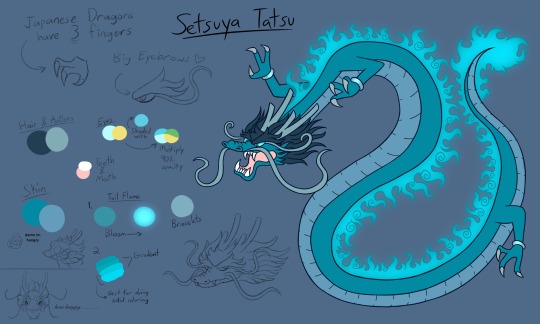
DID I EVER POST MY NEW SETSUYA REFS??????????? FUCK HERES KING DRAGON
hehe anyways Setsuya is based on Nagas/Ryu, one of the 8 legions of mythological/heavenly races in Buddhism (even more specifically he’s inspired by things like the azure dragon/“the eight great dragon kings”)
Nagas and dragons are somewhat interchangeable in a lot of buddhist folklore, but in South/Southeast Asia, depictions of Nagas are more cobra-like. I went with a more classic dragon look, though, cause I didn't want the design to be too close to the Magoraka, another snake-like legion
Nagas/Dragons are pretty neat though!! I think it's fucking hilarious how most southeast/east asian countries have creation myths involving dragons. Vietnam's creation myth not only involved dragons, but I think it was also the country's earliest record of divorce, which is like. oddly funny. vietnam literally came to be bc the wife took the kids
what was I saying. idk dragon deez nuts
2 notes
·
View notes
Text
Indian and South East Asian people passed on Vedic astrology, countless folklore, deities, herbal medicine and groundbreaking knowledge widely used in the occult today
I feel like there’s a nuance missing in these divine feminine almighty mother books. Sorry😭
Some were charting the stars, others were sending their sons to rob, maim, massacre and destroy.
Let’s not pretend all societies were full of uber spiritual divine women.
7 notes
·
View notes